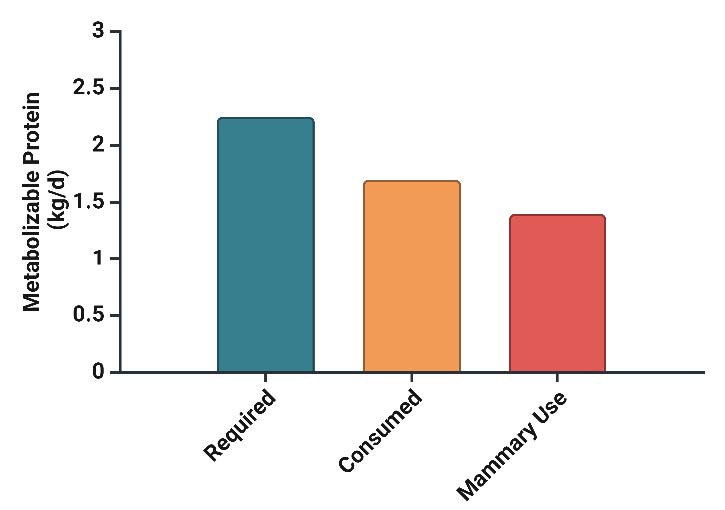Dairy physiology series: Transition period and negative energy balance
A notable paper about dairy cows’ biology during the transition period highlighted how this stage, spanning from late pregnancy to early lactation, is crucial for the cow’s productivity. For instance, the success of the transition period greatly impacts the cow’s profitability for that lactation cycle. During this time, dairy cows go through various metabolic changes to ensure they have enough nutrients for their maintenance, the maintenance and growth of their fetus, and milk production after calving.
During the transition period, the decreased dry matter intake happens at the same time there is an increased maintenance and milk production costs (Figure 1), resulting in a state of negative energy balance (NEB), which can actually be better characterized as a negative nutrient balance. Difficulty to adapt to the nutrient needs for lactation during the transition period is directly related to the increased occurrence of health problems in this period. As so, intake has a great impact in this scenario, as it is directly related to nutrient availability and it is one of the main determinants of the magnitude of the NEB.


Figure 1. Amounts of Energy and Metabolizable Protein required, consumed, and used by the mammary glands of healthy lactating dairy cows at 4 days in milk. The result between what is required and what is consumed is a negative energy and protein balance. Besides, most of the nutrients consumed will be used by the mammary gland, resulting in the cow using their body resources for other demands (adapted from Bell, 1995).
As the cow’s intake decreases while her nutrient needs increase, her body tries to balance things out to keep her healthy. Two main types of regulation come into play to maintain the cow’s health: homeostasis and homeorhesis. Homeostasis refers to the body’s ability to keep its internal conditions stable, like maintaining a steady level of glucose in the blood. On the other hand, homeorhesis involves more long-term adjustments to prioritize certain physiological states. For instance, insulin resistance, where the body becomes less responsive to insulin, is a mechanism that helps the cow to meet the demands of early lactation by promoting fat breakdown and glucose production. For the postpartum dairy cow, meeting her nutrient demands while in intake deficit becomes even more critical because factors like environmental conditions, management practices, social interactions, and health issues affect how well she can utilize nutrients for productive purposes. Thus, for the cow, keeping herself healthy and properly functioning becomes a top priority over milk production.
The transition to lactation also brings about changes in hormone levels, such as insulin-like growth factor-1 (IGF-1) and growth hormone (GH), which influence the cow’s metabolism. Growth hormone, for example, stimulates the liver to produce IGF-1 and promotes fat breakdown and glucose production. However, the shift to lactation can lead to a drop in blood glucose levels, resulting in the incomplete breakdown of fats and the production of ketone bodies, such as beta-hydroxybutyrate (BHB). Although major discussions are taking place now as to whether high blood BHB concentrations are considered pathological or not (stay tuned for the upcoming edition delving in this topic!), historically, high levels of BHB indicated a condition called ketosis, which can affect the cow’s health and milk production negatively.
One major challenge during this transition is managing negative energy balance and inflammation. Dairy cows with high body condition scores are particularly at risk because their bodies undergo intense fat breakdown, which can compromise their immune function. Factors like insulin resistance and increased fatty acid levels can trigger inflammation, further impacting the cow’s health and productivity. Additionally, the mobilization of fat stores during negative energy balance may also play a role in uterine diseases, highlighting the interconnection of various physiological processes during this critical period for dairy cows. More information about inflammation and adipose tissue will be available in our Current Development Note II from this Dairy Physiology Series, coming up soon.